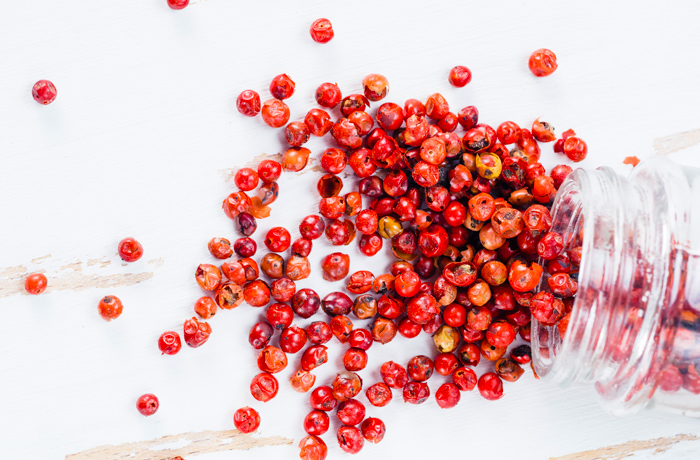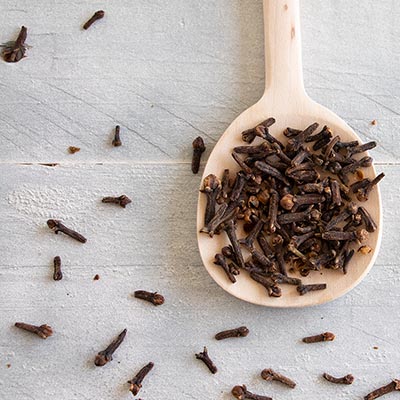In fact, these small red berries are not real pepper in the botanical sense.
Pink pepper is the dried, fully ripe berries of the Brazilian pepper tree, a sumac plant with the botanical name Schinus terebinthifolius. Well-known representatives of sumac plants are e.g. pistachios or mangos. Today the tree is mainly cultivated on the spice island La Réunion next to Brazil.
Like many other spices, pink pepper came from South America to Europe by the Spanish and Portuguese explorers. In the seventies and eighties of the last century, pink pepper became fashionable as a spice for fine cuisine, particularly because of its appearance. Because the small dried berries look very nice and enhance so many food optically.
The berries are picked when red ripe and pickled in sugar or brine before drying. The brittle skin coats a small seed, the pepper berries are sold unpeeled.
Flavour of Pink Pepper
The taste of pink pepper is not comparable to real pepper. Pink pepper smells similar to juniper berries and develops its aroma particularly well when crushed in a mortar. This is also very easy due to the delicate texture. The taste is more aromatic with a mild sweetness than hot.
Usableness of Pink Pepper
Pink pepper is particularly well known in the kitchen for its decorative effect. The small aromatic berries are also ideal with light dishes such as fruit salads, fresh lettuce creations, vegetables and crustaceans. In addition, mozzarella, avocado cream or guacamole get an exotic aroma through pink pepper. Very popular in creative cooking is also the combination of pink pepper with chocolate, in the form of tart, brownies, mousse, lava chocolate cake or ice cream.




















